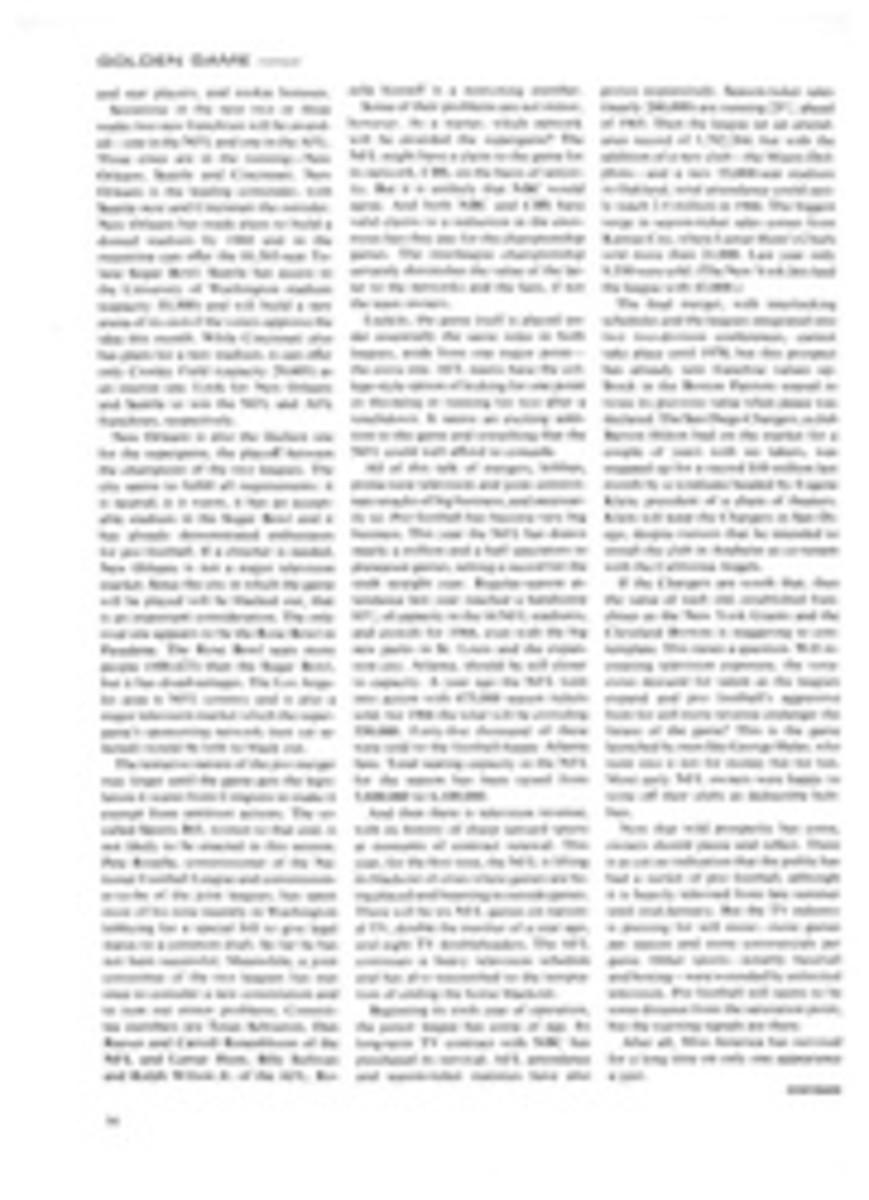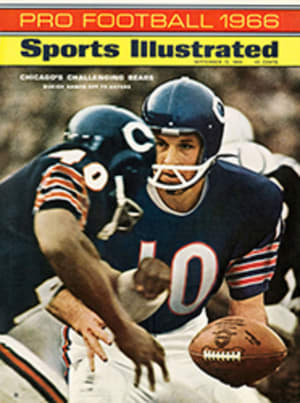
HOUSTON OILERS
Seldom has a football team changed as much between seasons as the Houston Oilers. Last year they were small, disgruntled, inept and last in the Eastern Division. This year they are big, happy, talented and could very well be first. The change began in January when Oiler Owner Bud Adams hired Don Klosterman away from the Kansas City Chiefs to become his general manager. Since then Klosterman has survived more than his share of ordeals—the Ladd-Faison mess, the firing of Coach Bones Taylor, the scuffle between Adams and a reporter, the John Brodie wrangle, to name a few—but he has reorganized the Oilers and has helped to put the team into a challenging position. Now it is up to new Coach Wally Lemm, new talent (primarily Ernie Ladd) and the new attitude to put the Oilers into their first AFL championship game since 1962.
"One thing I have learned this year is that loyalty is not just a word," says Oiler Flanker Charley Hennigan, who caught 101 passes in 1964 even though he was dissatisfied with his job. "We have loyalty on this club now, and we all want to win. I couldn't have said that before." Loyalty, of course, will carry a team only so far. Then size, speed and ability must take over.
In the matter of size there is a tremendous difference at one of the most important places. Ladd, who is 6 feet 9 and weighs 315, has moved in at right tackle after a long and involved trade from San Diego. "By himself, Ladd makes Houston 50% better on defense," says one AFL coach. Ladd automatically gives Houston a vastly improved pass rush and stops a favorite ploy of Oiler opponents, which is running up the middle. In the past the Oilers had a defensive line that was small for professional football and was vulnerable to bigger teams that ran straight at them. This year Houston not only has Ladd but has added Pat Holmes, 6 feet 5 and 270 pounds, who was twice All-Pro in Canada. With tackles of that bulk and quickness in front of him, Middle Linebacker Doug Cline becomes much more effective. Cline's backup man, Ronnie Caveness, is very quick and will find his 220-pound weight no handicap behind Ladd and Holmes. Scott Appleton, a regular last year, has become a swing tackle able to replace either Ladd or Holmes, increasing the Oilers' depth. With Don Floyd at right end and Gary Cutsinger on the left, and with 275-pound Jim Hayes able to play either place, the Oiler defensive line has changed in a few months from one of the league's feeblest to one of its toughest.
The linebacking is good, with Johnny Baker on the left and Danny Brabham on the right, but in the secondary the Oilers are worried about left corner back. Tony Banfield had an off year last season after knee surgery and though he was All-AFL in 1962, he has been dropped.
Lemm, who coached the Oilers to an AFL championship in 1961 before moving to the St. Louis Cardinals, is pleased with the look of his offense. The main problems are finding consistency at center and depth in the interior line. John Frongillo, who has a long record of injuries, and the veteran John Wittenborn will try to handle the snapbacks and the chore of finding blitzing linebackers. First-unit Guards Sonny Bishop and Bob Talamini are good pass blockers. Rookie George Rice, the No. 3 draft choice and also a possibility at defensive tackle, will play behind them. The first-unit tackles are veterans Rich Michael and Walt Suggs, but they could be pressed by a pair of promising rookies, Glen Ray Hines and George Allen. By midseason that crowd of rookies may show Lemm he has the bench he wants. It may take that long for the Oilers to perfect their timing, because Lemm looked at more than 100 candidates.
Tight End Willie Frazier has been traded, but there will not be much of a drop in ability with Bob McLeod, a good receiver, moving in. The spread end, Charlie Frazier, has been one of the pleasantest surprises to Lemm, who had never heard of Frazier before last spring but now is enthusiastic about his speed and moves. Lawrence Elkins missed last season because of a knee injury and is ranked No. 2 behind Frazier at end and behind Hennigan at flanker.
The running-back position is one that Lemm can hardly help gloating over. He has two excellent men in Sid Blanks and Ode Burrell. Blanks, who had a sensational rookie year in 1964, missed all of last season because of a knee injury. He is running sharply again this autumn. Burrell is small (185), but he runs inside the tackles like a much larger man and has the speed to turn the end. He was Houston's leading ground-gainer in 1965.
The Oilers went through their preseason schedule with four fullbacks—Donnie Stone, Charlie Tolar, John Henry Johnson and Hoyle Granger. Stone has played with Denver and Buffalo and is dependable and durable. Tolar has been the Oiler fullback since the club was organized. Johnson, the NFL veteran, signed with Houston for one more season before ending his career and has been romping around like a rookie. Granger, a 227-pound rookie, was being groomed for next season, but somebody had to go, and it was Granger.
Lemm may also have trouble deciding which of his quarterbacks to use. He has veteran George Blanda (also valuable as a place kicker), third-year man Don Trull and six-year veteran Jacky Lee, just back from a weird loan to Denver. "Blanda has the experience," says Lemm. "Trull is pretty cool and can throw deep better than I had thought he could. Lee has a very strong arm." After a few bad seasons the 38-year-old Blanda has become caught up in the new attitude of the Oilers. He is thinner and more congenial, looks younger and has been working hard. Lemm probably will decide to stay with Blanda at quarterback but keep the others warming up. That system has worked before. For the new Oilers, it could bring a division championship.

